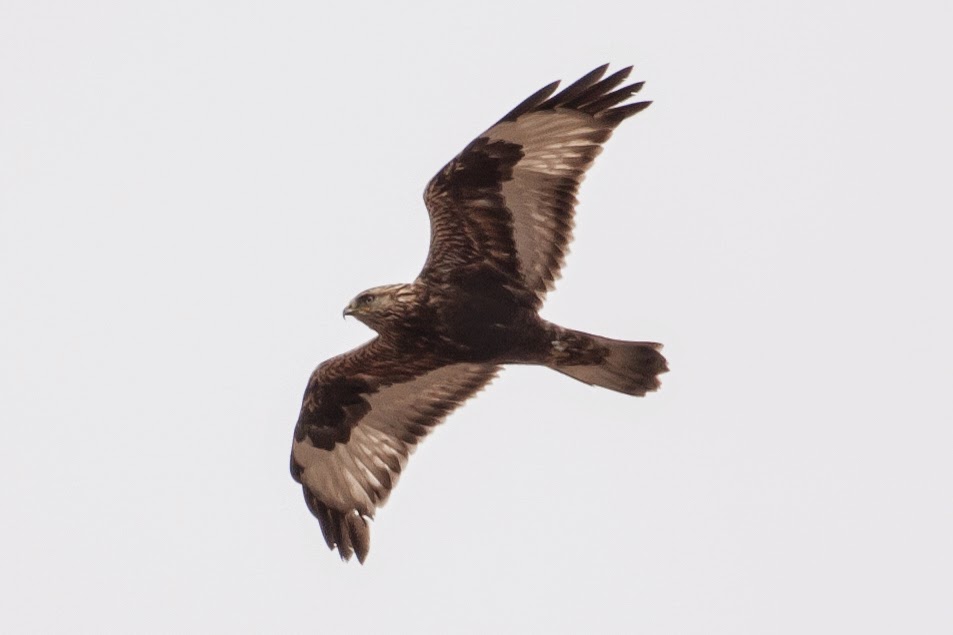 |
| Gear - Luke Tiller |
One of the biggest recent
developments in birding must be the invention of digital photography! In a
galaxy far, far away the acceptance of records of rare birds was often based
on years of developing your reputation with the local birding community and more
importantly perhaps the bird police (records committees). Now all one need do is snap off a
couple of shots of the rare bird you’ve witnessed and Bob’s your uncle, rarity
committee (and eBird reviewer) easily satisfied. Many citizen science projects rely on a review process to validate rare or uncommon records and this is something I believe HMANA are considering for Hawkcount in the near future.
In some ways it’s a double edged sword, now you can get rare records accepted
of birds without having to build the years of trust, but it sometimes feels like we might have become
almost completely reliant on getting pics to both confirm a rarity and even to conclusively get an ID. Last Fall, for example, I was chasing Spizella sparrows through a field for a while before my friend decided rather
than chase the bird down further he’d just zoom in his camera and check the shot
of the bird in question for the median crown stripe and other features that
would ID our bird as a brighter Brewer’s or dull Clay-colored Sparrow.
Obviously we are doing our
best to collect accurate data at a hawkwatch, but let's face it, people make
mistakes. When I say people I mean everyone. Hawkwatching is tough and I’ve
seen great hawk watchers make bad calls – so imagine what us mere mortals are
up to. A quick identifying snap, often no matter how bad, can produce something
that is identifiable to support one's claims – check out the distant dark
Red-tail that we had on the HMANA Raptor ID tour in 2014 (report here)!
 |
| Dark Red-tailed Hawk at Braddock Bay - Catherine Hamilton |
Of course getting those
identifying shots is much easier with perched birds than it is with ones in flight.
The arts of digibinning and digiscoping aren’t really aimed at capturing soaring
birds, though the adapters at least make it almost possible. In fact I have
managed to get handheld record shots of birds in flight through the scope - like
the following Golden Eagle. That said if you thought digiscoping in general
was frustrating, and I know I do, getting flying birds is pretty near impossible in
many situations.
Hawkwatchers have plenty of things to do when they are juggling a busy count day and it may be that one of the last things they want to do is think about recording birds. That said, as well as for the nasty things in life (like humoring eBird reviewers), cameras are there for the good things too. Everyone knows the old adage that a picture is worth a thousand words. Raptors are beautiful and hawk migration can be visually stunning. Having a ready supply of great images that you can use for publicity, outreach or that you can loan to local papers for articles are all invaluable. You can also use them just to create a buzz on social media with birders and members of the local community alike.
The great thing is that you
now no longer need to break the bank to help record what is happening at your
hawkwatch. DSLR setups don’t have to cost a fortune (though they can of course)
and super zoom and bridge cameras can often be really reasonably priced.
Even better, most have decent video technology too. It certainly makes for more
fun reading when you can share images with your daily hawkwatching updates. I
loved looking at the Borrego Springs Hawkwatch blog to see how they were
faring (link here) this past Spring and keeping up with goings on at Derby Hill was made infinitely more fun by
seeing the photos Dave Wheeler would share on his hawkcount checklist (link to his flickr account here) and the video in the following link certainly makes migration more vivid (link here)
 |
| Digiscoped Golden Eagle at Braddock Bay - Luke Tiller |
One other great thing I was reminded of about
digital photography the other week, whilst out looking at California Condors, is
that it can often give you the ability to accurately
pick up stuff like wing tags on a moving bird. They can often be almost
impossible to read through bins or scope, but with a nice photograph it is
often simple.
So, to conclude, photographs create memories,
help keep our ID’s honest, create great promotional and outreach opportunities
and can even aid in the processes of citizen science. If you haven't already, it's a great time to invest in a camera. Over the season HMANA will share what we hope will be some
useful photography tips here on the blog. We hope they inspire!










.jpg)


